-
 Bitcoin
Bitcoin $121100
0.58% -
 Ethereum
Ethereum $4696
-0.08% -
 XRP
XRP $3.215
-2.33% -
 Tether USDt
Tether USDt $0.9999
0.00% -
 BNB
BNB $863.5
1.02% -
 Solana
Solana $202.9
0.63% -
 USDC
USDC $0.9994
-0.03% -
 Dogecoin
Dogecoin $0.2384
-3.43% -
 TRON
TRON $0.3676
2.68% -
 Cardano
Cardano $0.9704
10.78% -
 Chainlink
Chainlink $23.42
-3.16% -
 Hyperliquid
Hyperliquid $46.63
2.40% -
 Stellar
Stellar $0.4423
-2.88% -
 Sui
Sui $3.933
-2.53% -
 Bitcoin Cash
Bitcoin Cash $608.8
-0.25% -
 Hedera
Hedera $0.2641
-0.78% -
 Ethena USDe
Ethena USDe $1.000
-0.02% -
 Avalanche
Avalanche $24.91
-1.56% -
 Litecoin
Litecoin $127.9
-3.85% -
 Toncoin
Toncoin $3.509
-0.67% -
 UNUS SED LEO
UNUS SED LEO $9.269
0.23% -
 Shiba Inu
Shiba Inu $0.00001357
-2.89% -
 Uniswap
Uniswap $11.42
-5.71% -
 Polkadot
Polkadot $4.191
-2.18% -
 OKB
OKB $102.8
-4.14% -
 Bitget Token
Bitget Token $4.749
-2.52% -
 Dai
Dai $0.9998
0.00% -
 Cronos
Cronos $0.1630
-3.52% -
 Pepe
Pepe $0.00001183
-4.65% -
 Aave
Aave $324.7
-0.96%
What is the relationship between USDT and the US dollar?
Tether (USDT), pegged to the US dollar, aims for a 1:1 value but relies on Tether Limited's reserves, sparking debate and scrutiny. Market sentiment significantly influences USDT's price, impacting the broader crypto market's stability.
Mar 11, 2025 at 07:10 pm

Key Points:
- USDT, or Tether, is a cryptocurrency pegged to the US dollar. This means one USDT is theoretically always worth one US dollar.
- This peg is maintained through Tether Limited's claim to hold reserves backing each USDT in circulation. The composition of these reserves is a point of ongoing debate and scrutiny.
- The relationship isn't a direct, 1:1 exchange with the US dollar itself; rather, it's a relationship mediated through Tether's reserves and the cryptocurrency market.
- Fluctuations in market sentiment towards Tether can cause USDT's price to deviate slightly from its intended $1 peg, although these deviations are typically temporary.
- The stability (or lack thereof) of USDT significantly impacts the broader cryptocurrency market, acting as a crucial bridge between fiat and cryptocurrencies.
What is the relationship between USDT and the US dollar?
Tether (USDT) is a stablecoin, a type of cryptocurrency designed to maintain a stable value relative to another asset, in this case, the US dollar. The core of its relationship with the US dollar lies in Tether Limited's claim that each USDT in circulation is backed by an equivalent amount of US dollars held in reserve. This means, ideally, one USDT should always be worth one US dollar. However, the reality is considerably more complex.
The connection isn't a direct, instantaneous exchange with the US dollar itself. You can't directly exchange USDT for USD at a bank in the same way you would exchange Euros for US dollars. Instead, the relationship is facilitated through cryptocurrency exchanges. You buy USDT using fiat currency (like USD) on these exchanges, and you can also sell USDT to receive fiat currency. This process introduces market forces and exchange fees that can influence the apparent value of USDT.
Tether's claim of a 1:1 backing with US dollar reserves has been a subject of intense scrutiny and debate within the cryptocurrency community. Audits of Tether's reserves have been inconsistent and often haven't fully satisfied critics' concerns about transparency and the true nature of the assets backing the USDT supply. These concerns, and any perceived lack of transparency, directly impact market confidence in USDT.
While Tether strives to maintain a 1:1 peg, the actual market price of USDT can sometimes deviate slightly from $1. These deviations are often short-lived and typically reflect changes in market sentiment towards Tether itself rather than inherent flaws in the US dollar. Fear, uncertainty, and doubt (FUD) regarding Tether's reserves can lead to temporary drops in USDT's value, causing ripples throughout the cryptocurrency market.
Conversely, periods of high demand for USDT, perhaps due to a need for a stable asset during market volatility, can lead to temporary increases in USDT's value. This demonstrates how the relationship between USDT and the US dollar is heavily influenced by factors outside of the simple concept of a direct reserve backing. The cryptocurrency market's perception of Tether's stability plays a vital role.
How does Tether maintain its peg to the US dollar?
Tether Limited claims to maintain the peg through a combination of strategies, including holding US dollar reserves equivalent to the number of USDT in circulation. They also state they engage in market-making activities to stabilize the price of USDT. This involves buying and selling USDT on exchanges to counteract any significant deviations from the $1 peg. However, the specifics of these strategies, particularly the precise composition of their reserves, remain a source of ongoing controversy and lack of complete transparency.
What are the risks associated with using USDT?
The primary risk associated with USDT is the potential for the peg to break. If market confidence in Tether's reserves or its ability to maintain the peg falters, the price of USDT could plummet. This could trigger cascading effects throughout the cryptocurrency market, as many traders use USDT as a stable asset to manage their risk. Furthermore, regulatory uncertainty surrounding Tether and its operations presents an additional risk factor for users.
Another risk is counterparty risk, which relates to the solvency of Tether Limited itself. If the company faces financial difficulties, it could impact its ability to maintain the peg and potentially lead to a loss of value for USDT holders. Finally, the lack of full transparency regarding the reserves adds a layer of uncertainty and risk for investors.
What are the benefits of using USDT?
USDT offers a level of stability in the often volatile cryptocurrency market. This stability allows traders to easily switch between fiat currencies and cryptocurrencies without the price fluctuations inherent in more volatile crypto assets. Its wide acceptance across numerous cryptocurrency exchanges also makes it a convenient tool for trading various cryptocurrencies. The ease of transferring USDT between exchanges and wallets contributes to its widespread usage.
Frequently Asked Questions:
Q: Is USDT a completely safe investment?
A: No, USDT, like any other cryptocurrency, carries inherent risks. The stability of its peg depends on the integrity of Tether Limited and the accuracy of its reserve claims, both of which are subjects of ongoing debate and scrutiny.
Q: Can I use USDT to buy goods and services?
A: While the acceptance of USDT as a payment method is growing, it's still not as widely adopted as traditional fiat currencies. Many merchants accept cryptocurrencies, but the specific acceptance of USDT varies.
Q: How is USDT different from other stablecoins?
A: USDT is one of the oldest and most widely used stablecoins. However, other stablecoins exist, some backed by different assets (like other fiat currencies or even precious metals) or using different mechanisms to maintain their peg. Each has its own strengths and weaknesses. The key differences often lie in the transparency of their reserves and their overall market capitalization.
Q: What happens if Tether loses its peg?
A: If Tether loses its peg to the US dollar, the value of USDT would likely decrease significantly. This would have a considerable impact on the cryptocurrency market, potentially causing widespread volatility and losses for investors holding USDT.
Q: Where can I buy USDT?
A: USDT can be purchased on most major cryptocurrency exchanges. However, it is crucial to choose a reputable exchange to mitigate the risk of scams or fraudulent activities. Remember to always do your research and choose a platform you trust.
Disclaimer:info@kdj.com
The information provided is not trading advice. kdj.com does not assume any responsibility for any investments made based on the information provided in this article. Cryptocurrencies are highly volatile and it is highly recommended that you invest with caution after thorough research!
If you believe that the content used on this website infringes your copyright, please contact us immediately (info@kdj.com) and we will delete it promptly.
- Kazakhstan's Crypto Leap: Bitcoin ETF and Central Asia's Digital Finance Future
- 2025-08-13 12:45:19
- BlockDAG Presale Blazes Past $371M: Fundraising Frenzy Fuels Crypto Sensation
- 2025-08-13 13:05:21
- Meme Coins: Chasing the 2025 Surge – Which Will Moonshot?
- 2025-08-13 10:25:23
- Bitcoin's Wild Ride: Rally, Pullback, and What's Next
- 2025-08-13 10:25:23
- Bitcoin, Bitmax, and Institutional Demand: A New Era of Crypto Investment
- 2025-08-13 10:45:12
- Solana, ROAM, and Airdrops: What's the Buzz in 2025?
- 2025-08-13 11:35:13
Related knowledge

How to choose a reliable USDT exchange service provider? How to identify?
Jun 12,2025 at 03:15pm
Understanding the Role of USDT in Cryptocurrency TradingUSDT (Tether) is one of the most widely used stablecoins in the cryptocurrency market. It is d...
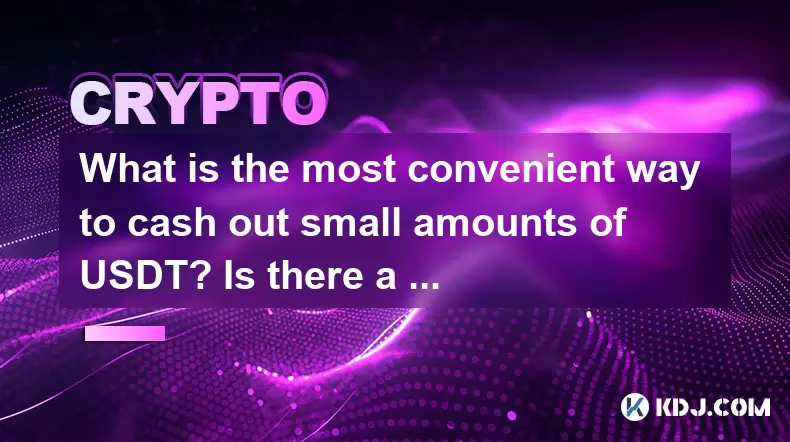
What is the most convenient way to cash out small amounts of USDT? Is there a shortcut?
Jun 11,2025 at 11:00pm
Understanding the Need to Cash Out Small USDT AmountsCashing out small amounts of USDT can be a challenge for many crypto users. Traditional methods o...
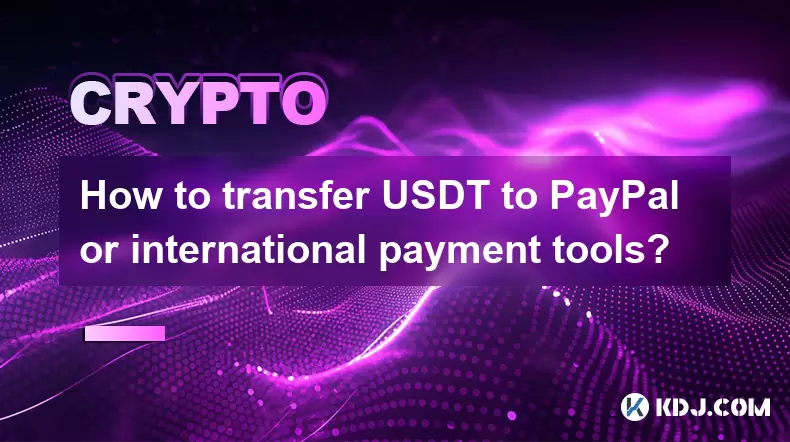
How to transfer USDT to PayPal or international payment tools?
Jun 15,2025 at 05:28am
Understanding the Basics of USDT and PayPal IntegrationUSDT (Tether) is a stablecoin pegged to the US dollar, offering blockchain-based value transfer...
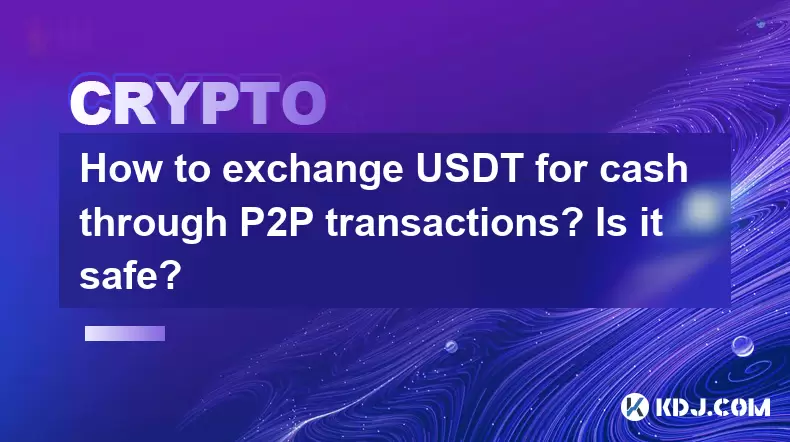
How to exchange USDT for cash through P2P transactions? Is it safe?
Jun 18,2025 at 07:56am
Understanding USDT and P2P TransactionsTether (USDT) is a stablecoin pegged to the value of the US dollar, making it a popular choice for users who wa...
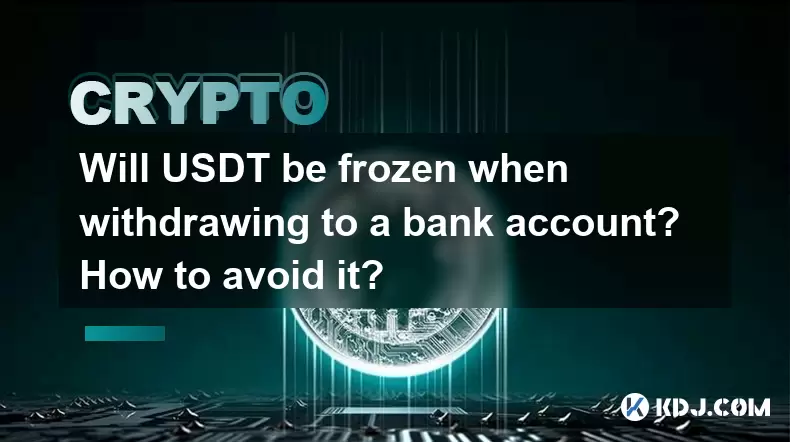
Will USDT be frozen when withdrawing to a bank account? How to avoid it?
Jun 15,2025 at 10:03am
Understanding USDT Withdrawals and Bank Account Freezing RisksWhen users decide to withdraw USDT (Tether) to a bank account, one of the most common co...
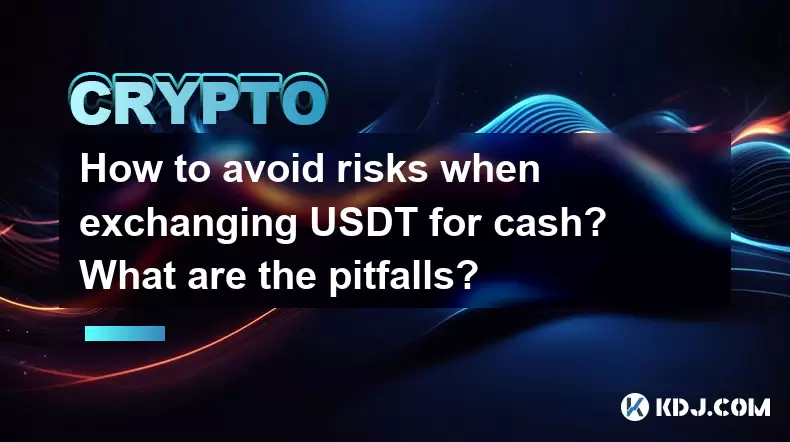
How to avoid risks when exchanging USDT for cash? What are the pitfalls?
Jun 11,2025 at 08:14pm
Understanding the Risks of Exchanging USDT for CashWhen exchanging USDT (Tether) for cash, users must be aware of the potential risks involved. As a s...

How to choose a reliable USDT exchange service provider? How to identify?
Jun 12,2025 at 03:15pm
Understanding the Role of USDT in Cryptocurrency TradingUSDT (Tether) is one of the most widely used stablecoins in the cryptocurrency market. It is d...

What is the most convenient way to cash out small amounts of USDT? Is there a shortcut?
Jun 11,2025 at 11:00pm
Understanding the Need to Cash Out Small USDT AmountsCashing out small amounts of USDT can be a challenge for many crypto users. Traditional methods o...

How to transfer USDT to PayPal or international payment tools?
Jun 15,2025 at 05:28am
Understanding the Basics of USDT and PayPal IntegrationUSDT (Tether) is a stablecoin pegged to the US dollar, offering blockchain-based value transfer...

How to exchange USDT for cash through P2P transactions? Is it safe?
Jun 18,2025 at 07:56am
Understanding USDT and P2P TransactionsTether (USDT) is a stablecoin pegged to the value of the US dollar, making it a popular choice for users who wa...

Will USDT be frozen when withdrawing to a bank account? How to avoid it?
Jun 15,2025 at 10:03am
Understanding USDT Withdrawals and Bank Account Freezing RisksWhen users decide to withdraw USDT (Tether) to a bank account, one of the most common co...

How to avoid risks when exchanging USDT for cash? What are the pitfalls?
Jun 11,2025 at 08:14pm
Understanding the Risks of Exchanging USDT for CashWhen exchanging USDT (Tether) for cash, users must be aware of the potential risks involved. As a s...
See all articles

























































































